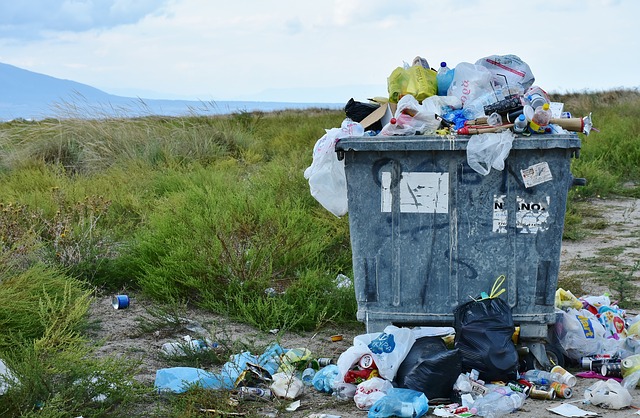
Our modern industrial economy traces a straight line from resource extraction to manufacturing to sales to waste disposal. Since Earth has finite resources and limited ability to absorb pollution, the straight-line economy is unsustainable; it is designed for eventual failure.
Why not make the economy circular, with waste from one process feeding into other production processes, thus dramatically reducing the need both for resource extraction and for the dumping of rubbish? We should mimic nature: it’s a central ideal of the ecology movement, with roots in indigenous wisdom worldwide. Doing so requires that we reduce, reuse, repair, and recycle—and replace nonrenewable resources with renewables wherever possible.
The circular economy is needed now more than ever. America alone currently produces almost 235 million tonnes of waste per year from homes and businesses, which works out to almost 4 kilograms per person per day. But that’s only 3 percent of all the solid waste in the US economy; the other 97 percent is generated by agricultural and industrial (e.g., mining and manufacturing) processes. If the total US waste stream (including wastewater) is allotted on a per capita basis, each American is responsible for 1.8 millionkilograms of waste per year.
Only about a third of waste from homes and businesses is recycled; the rate for industrial waste is much lower, with only 2 percent of the total waste stream currently being recycled. Meanwhile, the 2,000 active landfills in the US that hold the bulk of household trash are reaching their capacity. The US is among the highest waste-producing nations of the world on a per-capita basis, and the federal government has no strategy for dealing with the problem.
Americans should recycle more. Doing so would reduce pollution, slow climate change, and mitigate resource depletion and habitat destruction from mining and logging. But, sadly, the recycling industry faces problems. Prices for scrap metals and paper have declined in recent years (though Trump’s trade war has helped domestic scrap metal prices recover somewhat), and China is no longer interested in accepting metal and plastic waste from the US.
The bigger, systemic challenge is that collecting waste in tiny, mixed amounts; transporting it to a handling facility; sorting it; cleaning it; repackaging it; and then transporting it again almost always costs more and requires more energy than just discarding the stuff into a local landfill.
Waste is what economists call an externality: it’s never an intended, and often not a priced component of the production process, though it does inevitably impose costs—which are often borne by society as a whole. Manufacturers’ mandate is to produce more, and this translates to the strategy of planned obsolescence—making products that are meant to be replaced quickly rather than being endlessly reused and repaired.
What’s needed to circularize the economy? Two things.
First, an overall systemic commitment to the project. That means buy-in from industry, government, and citizens. Make things in such a way that recycling is easier. Focus on extending producer responsibility. Automobile manufacturers, for example, already use a wide range of recycled materials in their products, and like to take credit for doing so. But making the auto industry truly circular will require participation throughout the entire supply chain, support from government via incentives and regulation, and consumer education. Other industries, such as consumer electronics, lag far behind the auto makers, so there is truly an enormous task ahead.
But the other thing we need to do will be an even bigger challenge: we need to ditch the growth imperative. As long as profit maximization and overall growth are the implicit goals of the economy, recycling will remain a boutique industry driven largely by relatively rich people who can afford to assuage their ecological consciences.
If we are to have a truly ecological materials flow, we must start with Natural Stepprinciples. No using renewable resources at faster than replenishment. No drawing down nonrenewable resources. No polluting ecosystems with products or byproducts of industrial processes.
A truly circular economy will be one in which all industrial processes are harmless to people and nature. That means that all “growth” will have to occur in the cultural sphere rather than in flows of materials and energy. We must focus on human happiness rather than GDP; on rates of participation in education and the arts rather than quarterly sales figures.
Currently, we are far from having a circular economy, and that gap is embodied in overflowing landfills and giant barges of trash with nowhere to go—as well as a plastic gyre the size of Texas in the Pacific Ocean. Will the monuments to our civilization consist of mountains of refuse? We can certainly do far better, but that will require us to make a systemic commitment to building a circular, steady-state economy whose aim is beauty and happiness rather than growth for growth’s sake.











































